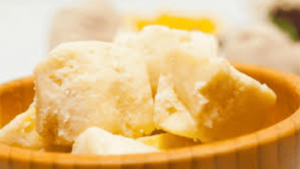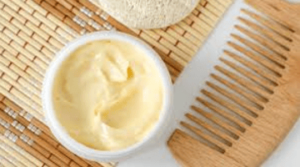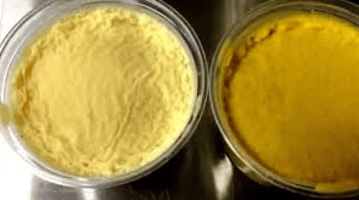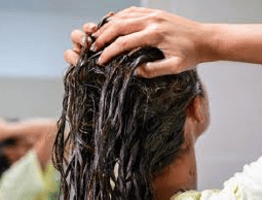Are you tired of spending money on expensive hair products that promise miracles but deliver disappointment? Look no further than shea butter, nature’s gift to hair care enthusiasts worldwide.
This creamy, ivory-colored substance extracted from the nuts of the shea tree has been a beauty secret across Africa for centuries. Whether you’re battling dry, brittle strands, taming frizz, or simply looking to add a natural product to your hair care routine, learning how to use shea butter for your hair can be a game-changer.
Shea butter stands out in the crowded world of hair care ingredients thanks to its rich composition of vitamins A, E, and F, along with essential fatty acids that nourish hair from root to tip. What makes this natural wonder even more appealing is its versatility – it works for all hair types, from the tightest coils to the straightest strands.
This comprehensive guide will explore the benefits, application methods, and creative ways to incorporate this miracle ingredient into your existing hair care routine. By the end of this article, you’ll be equipped with the knowledge to transform your hair naturally, affordably, and effectively.

What Is Shea Butter?
Shea butter is a fat extracted from the nuts of the shea tree (Vitellaria paradoxa), native to West Africa. The extraction process is labor-intensive and often carried out by women in rural African communities, making it not just a beauty product but also a source of economic empowerment.
Shea butter exists in several grades:
Raw (unrefined) shea butter:
- Minimally processed
- Preserves the majority of its inherent minerals and vitamins.
- Typically has a stronger scent
- Usually ivory or yellowish in color
- Most beneficial for hair care
Refined shea butter:
- Processed to remove impurities and odor
- Whiter in appearance
- Longer shelf life
- May have fewer nutrients due to processing
For hair care purposes, unrefined shea butter is generally preferred as it contains the highest concentration of beneficial compounds. Its rich content of oleic acid, stearic acid, linoleic acid, and vitamins makes it exceptionally nourishing for hair follicles and strands.
Benefits of Using Shea Butter for Hair
Understanding the benefits will motivate you to learn how to use shea butter for your hair properly. Shea butter is a hair health superfood for the following reasons:
Deep Moisturizing
- Penetrates the hair shaft to deliver moisture from within
- Creates a shield to retain moisture.
- Prevents water loss from hair strands
- Especially beneficial for naturally dry or heat-damaged hair
Scalp Health
- Anti-inflammatory properties soothe irritated scalps
- Helps manage conditions like dandruff and dry scalp
- Fosters a more wholesome atmosphere for hair development
- Non-comedogenic, meaning it won’t clog hair follicles
Protection Against Environmental Damage
- Fosters a more wholesome atmosphere for hair development
- Creates a shield against harsh weather conditions
- Shields hair from UV radiation damage
- Protects against pollution and environmental stressors
- Prevents moisture loss in dry or windy weather
Enhanced Hair Strength
- Reduces breakage and split ends
- Increases hair elasticity
- Strengthens hair from the inside out
- Makes hair more resistant to mechanical damage from brushing and styling
Natural Shine Enhancement
- Adds luster without greasy residue when used correctly
- Smooths the cuticle layer for light reflection
- Improves overall hair appearance
- Creates healthy-looking shine rather than oily appearance
How to Pick Your Hair’s Best Shea Butter
Selecting the right product is crucial. Here’s what to look for:
Quality Indicators
- Color: Should be ivory, yellowish, or beige (not bright white)
- Texture: Soft and creamy, melts easily with body temperature
- Smell: Mild, nutty aroma (strong or chemical smells indicate poor quality)
- Source: Fair-trade and ethically sourced products support sustainable practices
Purity Factors
- Ingredient list: Should list only shea butter or ‘Butyrospermum Parkii’
- Additives: Avoid products with unnecessary fillers, preservatives, or fragrances
- Packaging: Dark containers protect nutrients from light degradation
- Certification: Look for organic certification when possible

When purchasing shea butter for hair care, less is more regarding ingredients. The purest form will deliver the best results for your hair without exposing it to potentially harmful chemicals.
Shea Butter Applications for Hair
The fundamental ways of to use shea butter for your hair include:
As a Deep Conditioner
- Start with clean, damp hair
- Melt 1-2 tablespoons of shea butter (depending on hair length)
- Apply thoroughly from roots to ends
- To retain heat, cover with a shower hat.
- Leave for 30-60 minutes
- Rinse thoroughly with lukewarm water
As a Leave-in Conditioner
- Measure out a pea-sized quantity of shea butter.
- Rub between palms until it melts completely
- Apply to the ends of damp hair, working upward
- If your hair is oily or fine, don’t use shea butter in the roots.Style as usual
As a Scalp Treatment
- Part dry hair into sections
- Apply small amounts of melted shea butter directly to the scalp
- Massage gently using fingertips in circular motions
- Leave overnight with a silk scarf or bonnet
- Wash hair the next morning with a gentle shampoo
As a Pre-Shampoo Treatment
- Apply melted shea butter to dry hair before washing
- Concentrate on damaged areas and ends
- Massage well and leave on for at least 30 minutes.
- Shampoo as normal, possibly twice if needed
- Condition as usual
As an Anti-Frizz Serum
- Pick up a small quantity of shea butter with your finger tips.
- Warm between fingers until completely melted
- Apply very lightly to dry hair focusing on ends and frizzy areas
- Use sparingly to avoid greasy appearance
DIY Shea Butter Hair Recipes
Enhance your knowledge of how to use shea butter for your hair with these DIY recipes:
Shea Butter Deep Moisturizing Hair Mask
Ingredients:
- 2 tablespoons unrefined shea butter
- 1 tablespoon coconut oil
- 1 tablespoon honey
- Five drops of essential oil of rosemary (optional)

Preparation:
- With the aid a double boiler, melt coconut oil and shea butter.
- Remove from heat and add honey
- Add essential oil when mixture cools slightly
- Stir until smooth and creamy
- Apply to hair that is a bit wet, make sure that the ends are properly covered
- Leave for 45 minutes
- Rinse thoroughly
Shea Butter Scalp Soother
Ingredients:
- 3 tablespoons shea butter
- 2 tablespoons aloe vera gel
- 5 drops tea tree essential oil
- 3 drops peppermint essential oil
Preparation:
- Whip shea butter until fluffy
- Fold in aloe vera gel
- Add essential oils and mix well
- Apply directly to scalp in sections
- Massage gently
- Leave overnight
- Wash hair in the morning
Shea Butter Hair Growth Stimulator
Ingredients:
- 4 tablespoons shea butter
- 1 tablespoon castor oil
- 1 tablespoon jojoba oil
- 3 drops rosemary essential oil
- 3 drops lavender essential oil

Preparation:
- Melt shea butter gently
- Add oils and mix thoroughly
- Allow to cool slightly but remain liquid
- Massage for five minutes after applying to the scalp.
- Cover hair and leave overnight
- Wash thoroughly in the morning
Tips for Different Hair Types
Understanding how to use shea butter for your hair type specifically will maximize benefits:
For Curly and Coily Hair
- Use more generous amounts
- Focus on ends which tend to be drier
- Can be used more frequently (2-3 times weekly)
- Works well as a daily moisturizer when diluted
- Perfect for defining curl patterns when used lightly
For Straight or Fine Hair
- Use very small amounts
- Focus on ends only
- Avoid roots completely
- Use less frequently (once weekly maximum)
- Consider mixing with lighter oils for easier application
For Color-Treated Hair
- Apply before coloring to create a protective barrier
- Use after coloring to restore moisture
- Focus on damaged sections from chemical processing
- Apply regularly to maintain color vibrancy
- Mix with color-safe ingredients only
For Aging Hair
- Focus on scalp massage to improve circulation
- Use regularly to combat dryness that comes with age
- Mix with stimulating essential oils for added benefits
- Apply more generously as aging hair tends to be drier
- Use as an overnight treatment weekly
Common Mistakes When Using Shea Butter for Hair
Even with knowledge of how to use shea butter for your hair, these mistakes can hinder results:
Using Too Much
- Creates buildup and weighs hair down
- Difficult to wash out
- Makes hair appear greasy
- Attracts dirt and dust
Incorrect Application
- Not melting properly before applying
- Applying to soaking wet hair (damp is better)
- Not distributing evenly
- Concentrating too much on one area
Poor Quality Product
- Using highly refined versions with fewer nutrients
- Selecting products with harmful additives
- Using old or rancid shea butter
- Using improperly stored product
Improper Storage
- Exposing to high temperatures
- Storing in direct sunlight
- Using contaminated fingers to scoop product
- Leaving container open
Unrealistic Expectations
- Expecting immediate results
- Looking for instant styling benefits
- Using as a styling product rather than a treatment
- Not giving enough time between applications
Combining Shea Butter with Other Hair Care Ingredients
Enhance your ‘use of shea butter for your hair knowledge’ with these complementary ingredients:
Beneficial Oils
- Coconut oil: Adds penetrating moisture
- Argan oil: Enhances shine and manageability
- Jojoba oil: Balances scalp oil production
- Olive oil: Provides additional softening
Essential Oils
- Rosemary: Stimulates growth
- Lavender: Calms scalp irritation
- Peppermint: Increases circulation
- Tea tree: Combats dandruff and fungal issues
Natural Boosters
- Honey: Adds humectant properties
- Aloe vera: Soothes and hydrates
- Apple cider vinegar: Balances pH
- Avocado: Provides additional fatty acids
FAQs
Can shea butter cause hair loss?
Shea butter does not cause hair loss. In fact, it’s quite the opposite – shea butter provides essential nutrients that strengthen hair and may prevent breakage. Its anti-inflammatory properties can create a healthier scalp environment conducive to growth.
However, if you experience any irritation or allergic reaction, discontinue use immediately and consult a dermatologist.
How frequently should my hair be treated with shea butter?
The kind and condition of your hair determine how often you should use shea butter. For very dry, coarse, or curly hair, you might benefit from using small amounts 2-3 times weekly. For normal hair, once a week as a treatment is usually sufficient.
Those with fine or oily hair should limit use to once every 1-2 weeks and apply only to the ends. Always start with less and adjust based on how your hair responds.
Can shea butter help with hair growth?
While shea butter doesn’t directly cause hair to grow faster, it creates optimal conditions for healthy growth. It nourishes the scalp, reduces inflammation, and strengthens hair to prevent breakage – all factors that contribute to length retention.
For enhanced growth benefits, combine shea butter with growth-stimulating ingredients like rosemary oil or massage it into the scalp to improve blood circulation.
Does shea butter work for all hair types?
Yes, shea butter can benefit all hair types when used correctly. The key is adjusting the amount and application method. Curly, coily, and dry hair types can use more product more frequently, while straight, fine, or oily hair types should use minimal amounts and focus on the ends.
Everyone can benefit from its moisturizing and protective properties when applied appropriately for their specific hair texture and needs.
Will shea butter make my hair greasy?
Shea butter can make hair appear greasy if used incorrectly. To avoid this, use small amounts (start with a pea-sized portion), ensure it’s completely melted before application, focus on mid-lengths and ends rather than roots, and adjust the amount based on your hair type.
Fine or oily hair requires much less product than dry or coarse hair. If your hair looks greasy after application, you’re likely using too much.
Conclusion…
Learning how to use shea butter for your hair opens a world of natural hair care possibilities. This versatile ingredient offers solutions for various hair concerns, from dryness and breakage to frizz and lackluster appearance.
By understanding the correct methods of application, appropriate amounts, and best practices for your specific hair type, you can harness the full potential of this African treasure. While you might notice some immediate benefits like increased shine and softness, the most significant improvements come with regular use over time.
Whether you choose to use pure shea butter or create custom DIY treatments by combining it with complementary ingredients, your hair will thank you for the nourishment, protection, and care. So go ahead and embrace the power of shea butter in your hair care journey.
Your healthier, stronger, and more beautiful hair awaits.




